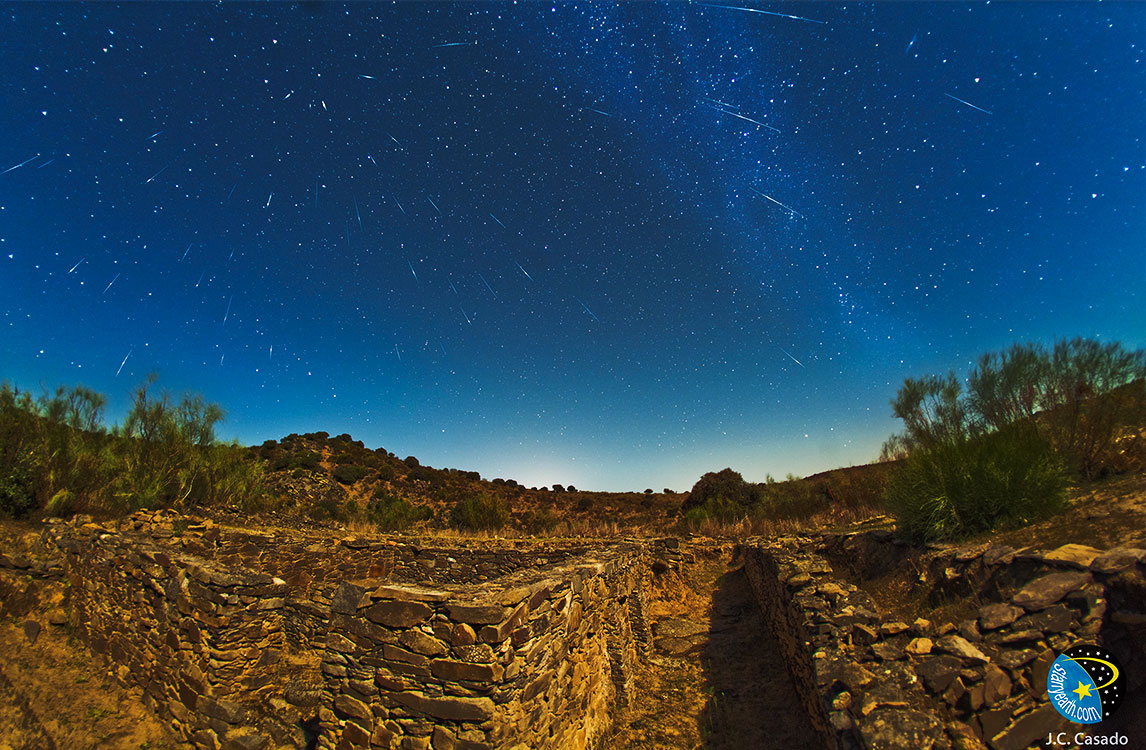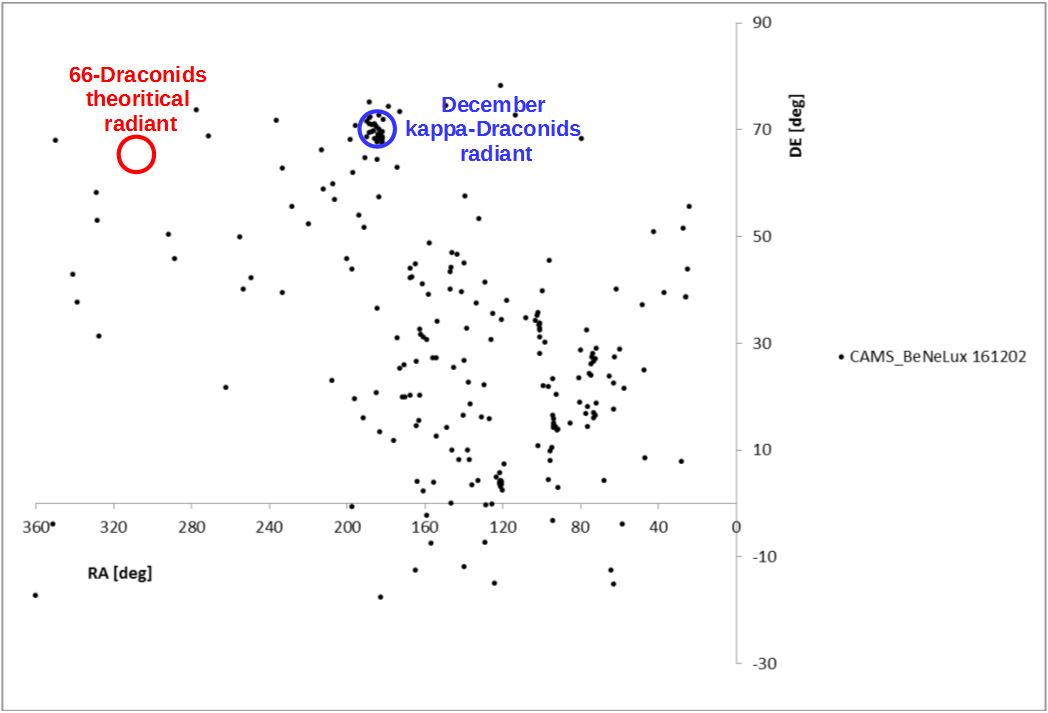Communicated by Carl Johannink

At the end of November, a call for observation was sent to meteor observers to monitor the potential activity of a potential minor meteor shower: the 66-Draconids (Šegon et al., 2016). Visual observers and camera networks were thus ready to observe on December 2-3, 2016 nights to try to catch some of these meteors, linked to the asteroid 2001XQ. The activity (if any) seemed to be very low: only a few potential meteor potentially originating from this source have been recorded. But another surprise made some observations on those nights even more valuable!
The anticyclonic conditions on Western Europe allowed the CAMS BeNeLux to monitor any activity coming from the Draconid region on Dec. 2-3 night. The first collected set of data(1) highlighted a strange phenomenon: if the 66-Draconids nearly proved non-existent, some meteor activity seemed to come from another close radiant… This was confirmed half a day later, when the recordings of the other CAMs BeNeLux stations(2) became available. Balancing the nearly non-activity of 66-Draconids (541 SDD), an activity enhancement of the December kappa-Draconids (337 DKD), which radiant lies at position (R.A. ~ 186° ; Dec. ~ +70°), was clearly detected (Jenniskens et al., 2011, 2016), with meteor originating from this source recorded from the beginning of the night (first appeared at 19h 39mn UT, on Dec. 2, 2016) until twilight (last meteor detected at 05h 08mn UT, on Dec. 3, 2016).


(1) Klaas Jobse (Oostkapelle), Jos Nijland (Benningbroek) and Carl Johanink (Gronau)
(2) Paul Roggemans (Mechelen), Koen Miskotte (Ermelo), Martin Breukers (Hengelo), Erwin van Ballegoij (Heesch), Cees Bassa (Dwingeloo), Robert Haas (Alphen aan de Rijn), Tim Polvliet (Gent), Hans Betlem (Leiden), Jean Marie Biets (Wilderen) and Bart Dessoy (Mostheuvel)
Jenniskens P., Gural P.S., Grigsby B., Dynneson L., Koop M., and Holman D., 2011. CAMS: Cameras for Allsky Meteor Surveillance to validate minor meteor showers. Icarus 216, pp.40-61.
Jenniskens P., Nénon Q., Albers J., Gural P.S., Haberman B., Holman D., Morales R., Grigsby B.J., Samuels D., Johannink C., 2016. The established meteor showers as observed by CAMS. Icarus 266, pp.331-354.
Šegon D., Vaubaillon J., Gural P., Vida D., Andreić Z., Andreić K., Skokić I., 2016. Dynamical modeling validation of parent bodies associated with newly discovered CMN meteor showers. Astronomy & Astrophysics, in press, DOI: http://dx.doi.org/10.1051/0004-6361/201629100.




 You saw something bright and fast? Like a huge shooting star? Report it: it may be a fireball.
You saw something bright and fast? Like a huge shooting star? Report it: it may be a fireball.  You counted meteors last night? Share your results with us!
You counted meteors last night? Share your results with us!  You took a photo of a meteor or fireball? You have a screenshot of your cam? Share it with us!
You took a photo of a meteor or fireball? You have a screenshot of your cam? Share it with us!  You caught a meteor or fireball on video? Share your video with us!
You caught a meteor or fireball on video? Share your video with us!